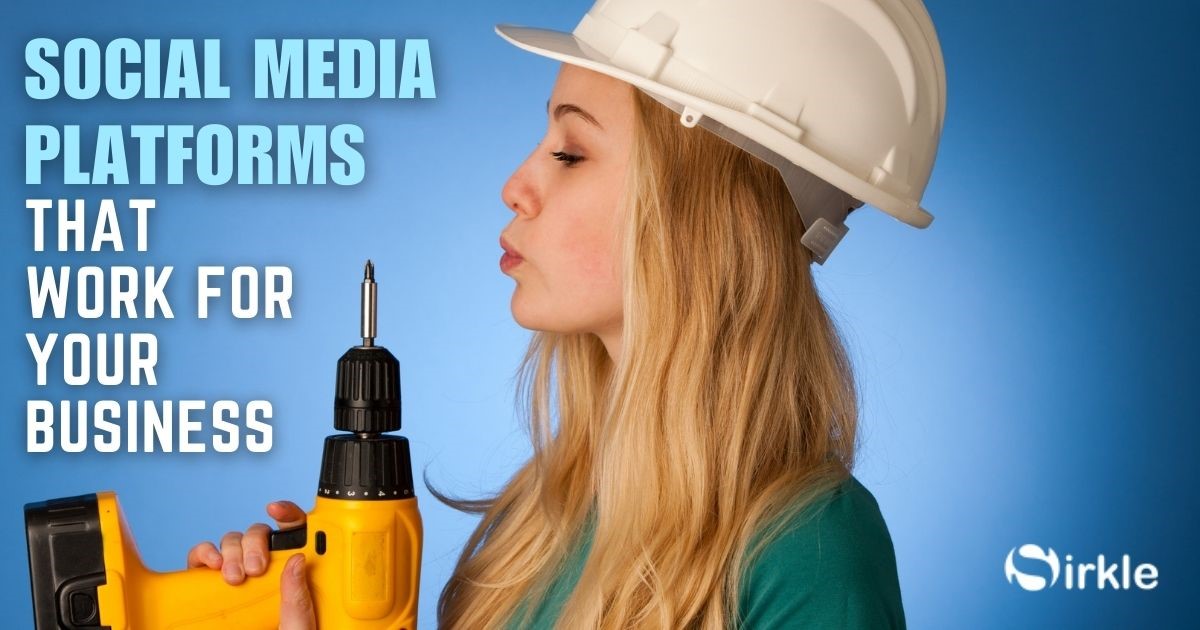Social Media Platforms That Work for Your Business

You can't be active on all social media platforms when you run a business. But how do you choose the right social media platform for your business? By narrowing down your choice to just a few, you will be able to focus your efforts and get the best return on your investment.
1. Establish your target audience first
You should be as specific as possible when answering the following questions to determine your target audience.
- How would you describe your typical customer?
- What is their age?
- Can you tell me if they are male or female?
- How much do they earn and how well educated are they?
- In addition to your products and services, what else are they interested in?
- Answer the questions below (and any others relevant to your business or industry) to identify your target audience.
2. Defining your goals is the second step
The primary goal of a business owner is to attract customers, but social media can also be used for creative purposes. Defining goals for your target audience is important once you know them. There are some brands that use social media to promote their brands and build friendly relationships with potential customers, while others use it to provide customer service.
As an example, Netflix uses Twitter's @Netflixhelps handle for customer service. Not only does this free up telephone lines, but it also encourages satisfied customers to spread the word about the service.
When creating your social media goals, brainstorm ways social media can benefit both your brand and your competitors.
3. Finding your audience is the third step
Once you've profiled your audience and defined your goals, you can now find your audience. To determine which platform your audience prefers, you'll have to look at their demographics. You should also consider how active your audience is on that platform. For instance, while young Facebook users may have profiles, they're more active on Instagram or TikTok. Aside from demographics and engagement, you'll also want to look at how individuals use the platform.
Listed below are some of the major social media platforms you can use to find your audience.
.jpg)
In spite of all the noise on Facebook, it is important to remember that people use Facebook to connect with their friends and build relationships. Due to its large population, your posts have limited reach-even within your own network-making it difficult to reach new audiences. Because of this, Facebook is an excellent platform for building loyalty among existing customers.
In evaluating Facebook as a potential platform, you should consider your business goals. While Facebook may not be the best choice if you're trying to acquire new clients, it is a great option if you're building a loyal following and want to stay connected with them.
.jpg)
Using hashtags to organize discussions around words and phrases, Twitter is a great platform to build awareness for your brand. You can learn what people are talking about by searching hashtags, so you can tailor your tweets to participate in popular discussions. News outlets often use Twitter to gather information about what is trending in order to find stories. Due to Twitter's ability to provide real-time updates to audiences, many brands combine Twitter with offline engagement, such as events.
.jpg)
Among Pinterest's most popular pins are recipes, style ideas, striking photographs, DIY crafts, and striking photographs. Users save content by "pinning" it to a virtual bulletin board. Pinterest is a visual platform, so you'll need strong graphics to engage users. Businesses that use Pinterest have seen strong results in retail sales.
YOUTUBE
.jpg)
There are 2.3 billion YouTube users, but with no subscription requirements to view content, YouTube has become one of the largest search engines. Many of these searches involve “How To” videos. A service industry business offering this type of content, as well as lifestyle and educational videos, will do well on this platform.
.jpg)
LinkedIn is unique in that it caters primarily to older audiences. Among ages 30-49, it has the highest number of members. LinkedIn also has a narrow focus, so people use it primarily to find jobs and network professionally. As a result, it is an excellent platform for generating B2B leads, networking, and recruiting new employees.
.jpg)
Instagram, which is one of the fastest-growing platforms, is particularly popular among young people. As with Pinterest, Instagram uses images and videos to create conversations. Due to its growing popularity, it is a good platform for businesses dealing with visuals, such as art, food, retail, and beauty. Because there is less noise than on Facebook, the platform can be used for generating leads.
TIKTOK
.jpg)
For businesses in visual industries such as art, food, retail, beauty, and some service industries, TikTok is ideal. In addition to its young demographic, TikTok can help build brand awareness among 18-24-year-olds.
Focus on your goals when making business decisions
Make an informed decision by looking at where your customers spend the most time online. There are many social media platforms out there now, but you don't have to use all of them. In order to increase engagement and success on social media, set realistic expectations and goals for your team. You'll be more likely to succeed and have fun if you align your goals with the right channels!
Feel free to contact us at www.sirkle.com if you have any questions.


